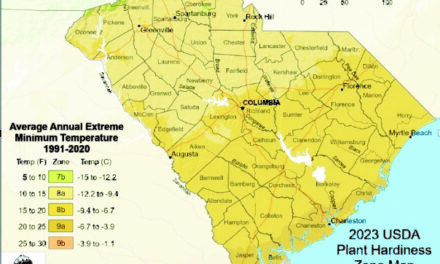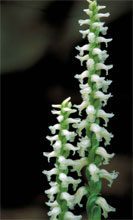 There’s a new kid on the block and he’s a thug. His name is Chamberbitter (Phyllanthus urinaria), and his sole purpose is to make my life miserable. OK, yours, too. He’s also known as “gripe weed” (no wonder why there) and he comes better equipped to replicate himself than Kudzu ever dreamed.
There’s a new kid on the block and he’s a thug. His name is Chamberbitter (Phyllanthus urinaria), and his sole purpose is to make my life miserable. OK, yours, too. He’s also known as “gripe weed” (no wonder why there) and he comes better equipped to replicate himself than Kudzu ever dreamed.
This Asian native was relatively unknown in the United States before the 1990’s, but has made rapid inroads as far north as Illinois. At first, it reminds you of a mimosa with its small leaves. It’s actually sometimes called “Little Mimosa.” But just look on the leaf’s underside. Every single leaf and stem has many tiny fruits attached in a row along its back. Each of these fruits is filled with infinitesimally small seeds. Curiously, it has no flower, but it can go to seed when only an inch tall. One plant alone can have hundreds of thousands of seeds. We mere mortals don’t stand a chance against those odds.
Once your garden or lawn is infected (and it will become infected; you can count on it), it will require Obsessive/Compulsive diligence to keep it under control. Although it is an annual and will die down at the first killing frost, the seeds don’t seem to be affected and will happily snooze away in your soil until early summer, then Shazam! The battle is on again! One saving grace is that the seeds do require sunlight to germinate, so if you can successfully keep a deep layer of mulch on every centimeter of exposed soil, you may escape total invasion. For a while.
Because the seeds are so small that even a slight wind can carry hundreds from your neighbor’s yard to yours, it will be no time at all before this hooligan and all his relatives have established homesteads. Even a container on your elevated porch, filled with brand new potting soil, isn’t safe from invasion.
Many of the land grant universities are doing research on this bully and have long lists of scary chemical pre- and post-emergence herbicides for your arsenal. Their websites all have the same theme; Chamberbitter is tough to control. You can find Clemson’s contribution at https://hgic.clemson.edu/factsheet/chamberbitter/
If you eschew chemicals and prefer to pull this weed, it has such a long tap root that you take a generous portion of your good garden soil with it. The very act of pulling the plant from the soil will cause it to drop a supply of seeds. If you do opt for chemical control, remember that any word with the ending ‘cide’, means ‘killer of.’ Even though herbicides will kill the plant, it doesn’t seem to affect the viability of seeds left on the ground. And be mindful that new studies come out every day which warn of the danger of using ‘cides’ in our garden.
If this sounds like a dismal outlook, it is.
The sad truth is that no matter what control method we use, it will be only a temporary solution. There is no such thing as ‘once and done’ with Chamberbitter.
Constant vigilance and perseverance are the watchwords. One can only hope that there is a solution on the horizon. I am flummoxed as to why this noxious weed is not on our state’s Invasive Species list.
If we could just figure out how to make Chamberbitter edible and appetizing, we could solve world hunger. They did it with Soylent Green. Actually, Chamberbitter isn’t toxic, and could be used as a vegetable or in salads. You first.
Sandra Educate calls herself the Grandma Moses of gardeners because she didn’t get into gardening seriously until she retired. She’s active in the local Master Gardeners Association and the Beaufort Garden Club, and she produces the annual Lunch and Learn series at the Port Royal Farmers Market. Sandra loves strange and unusual plants and hates weeds. She won’t give away her age, but she takes her inspiration from Thomas Jefferson, who said, “though an old man, I am but a young gardener.”








